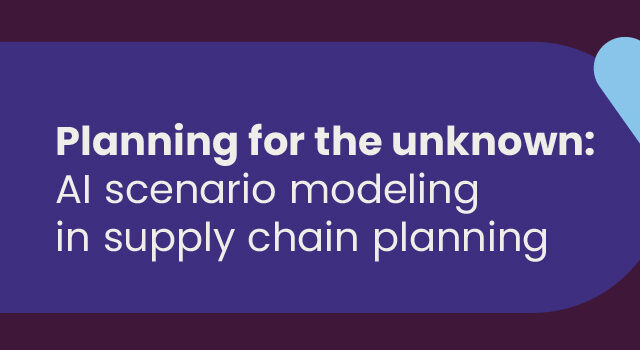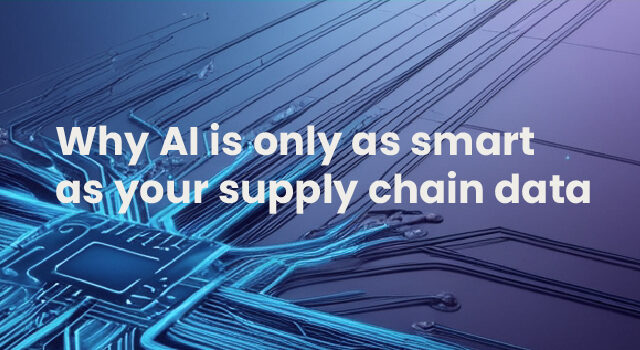Imagine an inventory planner starting their day with thousands of SKUs, shifting demand signals, and unreliable suppliers who’ve not delivered on time. In a traditional rule-based system, they’d lean on static reorder points or safety stock formulas while hoping yesterday’s rules still work today.
Now, imagine the same planner empowered with AI. Instead of chasing exceptions, they get a single recommendation that tells them what SKU or purchase order needs attention right now. This instantly frees up cash or prevents a costly stock-out. One AI-driven insight could be worth $40,000, $50,000, or even $160,000. That’s not theory. Netstock customers are seeing these results.
This is the choice businesses face: hold onto rigid planning tools and fall behind, or embrace solutions with AI planning capabilities for resilience, efficiency, and growth.
What does this look like in the real world? Then businesses choose AI solutions, they’re able to flex their inventory planning in line with demand, risk, and disruptions. This flexibility make them more adaptable to whatever might arise. Alongside this, growth comes in the form of time savings so teams can reinvest this resource into developing new business or product lines.
What’s in this blog?
Key takeaways
- Rule-based systems rely on rigid formulas that can’t keep up with modern complexity.
- AI-driven planning adapts in real time, helping businesses respond faster.
- Netstock’s AI delivers measurable wins, unlocking tens of thousands of dollars in opportunities.
- Companies that adopt AI gain a competitive edge in efficiency, service, and growth.
Why this debate matters now
We’ll skip the cliche about how volatile supply chains are right now, because those in the industry are already dealing with it constantly. One month you’re facing supplier delays, the next you’re managing sudden tariff changes. Traditional rule-based solutions that were once a dependable way to maintain control are starting to show cracks.
Decision-makers evaluating system upgrades can no longer afford to see AI as “future tech.” It’s accessible to many businesses – even SMBs – and quickly becoming table stakes for resilient operations. Companies waiting to adopt AI risk higher costs, longer lead times, and frustrated customers.
The question isn’t whether you’ll need AI. It’s how fast you can put it to work in your business.
Traditional rule-based planning: What it is (and why it worked…until now)
Rule-based inventory planning has been around for decades. It’s simple: planners set reorder points, safety stock levels, or min/max thresholds, and the system follows those instructions. In the past, this approach worked. Supply chains were simpler, product lines smaller, and demand more predictable.
The benefits were clear. Rule-based inventory planning is:
- Easy to understand and implement.
- Low cost compared to advanced systems.
- Familiar to planners who value manual control.
But what made rule-based planning effective in stable environments now makes it rigid. These static rules don’t adjust when conditions shift. The predictability of traditional, rule-based planning that was once a strength has become a weakness in a world defined by change.
The breaking point: Where rules fail in modern supply chains
Today’s supply chains look nothing like those of 20 years ago. Businesses juggle thousands of SKUs across multiple locations, each with unique demand patterns and supplier constraints. Rule-based systems aren’t built to handle this level of complexity.
Instead of supporting planners, rigid rules create endless exceptions. Systems trigger unnecessary orders or miss demand spikes, leaving teams to step in manually. Planners spend their days firefighting – overriding rules, chasing down stockouts, or explaining excess inventory to finance.
This cycle is exhausting, inefficient, and costly. Rules that once worked as guardrails now act as roadblocks, preventing businesses from scaling and adapting.
Enter AI: How machine learning changes the game
AI in inventory planning isn’t science fiction. It’s practical, proven, and already delivering value. At its core, AI uses machine learning to recognize patterns in historical and real-time data. Instead of following a fixed formula, the system learns and improves with every data point.
Here’s what that means for planners:
- Adaptive forecasting: Models adjust automatically to shifts in demand.
- Anomaly detection: AI spots outliers humans might miss.
- Scenario planning: Systems simulate outcomes to guide smarter decisions.
- Proactive alerts: Instead of reacting to problems, planners act on opportunities.
- Inventory replenishment: AI-powered inventory replenishment replaces guesswork with data-driven, automated ordering that helps planners know what to buy, when, and in what quantities.
The impact is immediate. Instead of slogging through manual overrides, planners get strategic – focusing on growth, supplier negotiations, or customer service. AI doesn’t replace them. It makes them sharper, faster, and more effective.
Machine learning vs rules: Side-by-side comparison
| Dimension | Rules-based planning | AI-driven planning |
| Forecasting | Based on fixed assumptions | Learns from patterns, adapts in real time |
| Responsiveness | Manual, reactive | Automated, proactive |
| Scalability | Breaks down with complexity | Handles thousands of SKUs easily |
| Risk | Relies on buffers only | Predictive, scenario-driven |
| Business Impact | Higher costs, missed sales | Lower costs, better service levels |
AI isn’t optional. It’s a competitive advantage.
Early adopters of AI-driven inventory planning are already outperforming competitors. They’re not just running leaner operations; they’re delivering to their customer on time, resulting in loyal customers and more sales.
AI is no longer a “nice-to-have.” In today’s market, it’s a competitive necessity. Businesses that rely on rules will find themselves slower, less efficient, and more vulnerable. Those that embrace AI will scale smarter and respond faster.
Take Bargreen Ellingson, for example. With Netstock, they transformed their inventory management into a strategic advantage. The result was a $2 million reduction in excess inventory. Additionally, their fill rate improved by 5% for high-turn items, and today, stock-outs are one-third of what they used to be.
With the addition of Netstock Opportunity Engine™ in their workflow, Bargreen has seen significant improvements in team morale and culture across inventory teams.
“A surprising yet valuable outcome has been the positive impact on our internal culture. Our warehouse managers feel more empowered and effective in their roles, and they experience a genuine sense of accomplishment from using Netstock.”
Netstock: Bringing AI inventory optimization into your ERP
Netstock delivers AI-driven optimization without forcing you to rip out your ERP. Instead, it enhances the systems you already use.
Here’s why Netstock stands out:
- Purpose-built AI designed for inventory planning.
- Proven ROI — over one million AI-driven opportunities unlocked.
- Data security and reliability you can trust.
- Ease of use that empowers planners, not overwhelms them.
With Netstock, AI becomes practical, actionable, and measurable — turning inventory into a competitive advantage.
This isn’t conjecture, either. At least half of our customers have already received AI recommendations valued at more than $160,000, and 75% have seen opportunities worth more than $50,000.





